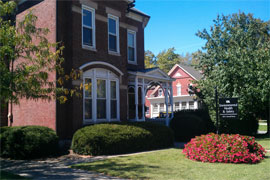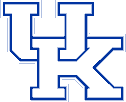Memorandum
| To: | UK Deans, Directors, Department Heads and Faculty |
|---|---|
| From: |
Harry Enoch Director, Environmental Health & Safety |
| Subject: | Environmental Surcharge |
| Date: | August 14, 1998 |
When the hazardous materials surcharge was adjusted from 4.3% to 8% in October 1997, my office received numerous calls asking for an explanation of the change. The surcharge was modified once again on July 1, 1998--good news this time as it was changed back to a broad-based surcharge: 0.67% on all materials, supplies and capital equipment. I believe it is important to communicate the need for the surcharge and the change to faculty and staff.
The attachment to this memorandum ("Waste Disposal Funding at the University of Kentucky") gives the rationale and historical perspective for the environmental surcharge. I would appreciate it if you would share this information with your staff.
Waste Disposal Funding
at the University of Kentucky
Rationale and History of the Environmental Surcharge
Introduction
During FY1997-98, the University received numerous comments on the hazardous materials surcharge that is applied to certain purchases to pay for waste disposal. On 1 July 1998, the University of Kentucky modified the surcharge, returning to the procedure originally adopted in 1994. The narrative below provides the background on this issue and describes the historical evolution of the surcharge, as well as the rationale for surcharge modifications.
Environmental
Surcharge
1 October 1994
Several years ago, UK was forced to deal with the "unfunded" costs of hazardous and radioactive waste disposal. These costs had increased exponentially in the decade between 1985 and 1994. In 1994, UK reacted by implementing an environmental surcharge to pay for waste disposal and to fund a new recycling program. The surcharge was imposed on the purchase of all materials, supplies and capital equipment at the time of their acquisition.

The surcharge was applied to specific "object code" groups and was assessed uniformly on all accounts of the University. The surcharge was not added to purchase orders; it was calculated monthly from the accounting statement and charged in one lump sum to each account once a month.
A committee of unit representatives considered alternative approaches, and the method described above was found to best meet the goals of fairness, ease of implementation, and placing charges close to where costs are incurred. The committee felt it was important to provide a cost incentive for departments and colleges to reduce their waste streams. Since UK also needed to make a greater effort toward recycling materials like aluminum and paper, a portion of the surcharge was used to fund an expanded recycling program.
This method of funding waste programs was intended to be fiscally sound and efficient. Funds collected through the surcharge were designated for use only for these programs. At the end of each year, any unused funds were to be allocated for use in the program the following year. The surcharge was to be adjusted annually to collect only the estimated program costs. The surcharge rate was set at 0.3% in 1994. This means that a department or lab spending $1,000 for materials and supplies would pay a surcharge of $3.
Environmental
Surcharge Modified
1 July 1997
In 1997 UK modified the environmental surcharge. During a review of the federal Cost Accounting Standards (CAS), it was determined that separate surcharges for hazardous materials and recycling would be more appropriate. The hazardous materials surcharge was set at 4.3% and was applied to the following object codes:
| 3308 | Chemicals and Laboratory Supplies |
| 3322 | >Gases |
| 3339 | Radioisotopes |
The rate was set at a level to recover the estimated costs of waste disposal. These three object codes were selected because they best represent the materials likely to lead to hazardous and radioactive waste based on our historical data. For calendar year 1996 these three categories accounted for 95% of UK's disposal costs.
The other 5% of the waste costs came from a broad list of waste types, including paints, pesticides, lead debris, oils, antifreeze, batteries, light ballasts, roofing material and diesel fuel. Collecting a proportionate share of the surcharge for each of these products at the time of purchase is problematic. UK does not have separate object codes for these products. Applying the surcharge to object code groups that contain these products would result in revenues far exceeding the proportionate share of waste costs.
The recycling surcharge was set at 0.2% and was assessed on all other purchases of materials, supplies and capital equipment. It was not assessed on object codes that were assessed the hazardous materials surcharge.
Return
to a Broad-Based Surcharge
1 July 1998
Hazardous materials surcharge receipts for July, August and September 1997 were significantly below anticipated levels. In order to pay for the waste program, it was necessary to increase the charge from 4.3% to 8% on 1 October 1997. This increase adversely affected several departmental teaching programs and disrupted budgets for a number of investigators who had significant chemical supply needs. There were also indications that the surcharge would have to be increased again in 1998. Also, there was a demonstrated need to split the object code that brought in the most receipts, namely Chemicals and Lab Supplies. If lab supplies (which as a rule do not generate hazardous waste) were not assessed, then the surcharge rate applied to chemicals, gases and radioisotopes would have to be much higher, perhaps approaching 15-20%. The higher surcharge rate could have been justified as a cost-based expense of teaching and research, as well as a deterrent to the purchase of unnecessary chemicals and the generation of hazardous waste. After considerable discussion, however, it was decided that a broad-based surcharge, which spreads the costs of waste disposal across a larger base of University expenditures, would impose less hardship on teaching and research programs. Thus, on 1 July 1998 UK returned to the combined environmental surcharge on all materials, supplies and capital equipment. The rate was set at 0.67%.
In order for the environmental surcharge to be applied to purchases made on federal grant accounts, it must satisfy the requirements of the Cost Accounting Standards (CAS). The surcharge must pass three major tests under CAS.
- May charge for
waste as a "direct cost" or "indirect cost" but not both. UK intends to charge grants for hazardous and radioactive waste disposal
as a direct cost (i.e., the surcharge) and not an indirect cost. UK
did not include waste disposal in the calculation of the indirect cost
rate (sometimes referred to as the "overhead rate").
Charges that are imposed on grants as direct costs must meet the requirements for service centers and recharge operations.
-
May not charge more than actual cost for waste disposal. UK is paying a portion of the cost of waste disposal with state funds, so there is no "profit" in this operation. Accounts are charged less than the actual cost of waste disposal.
-
Charges for waste disposal must be applied uniformly. UK is applying the surcharge uniformly to all purchases-everyone pays the same rate. There is no discriminatory or inconsistent pricing.
In Future
In order to establish an orderly process for future modification of the environmental surcharge the following steps will be taken:
- Consistent with CAS, any balances remaining at the end of a fiscal year will be redistributed to the waste disposal and recycling programs for the new fiscal year.
- The surcharge rate will be established during the preparation of the annual budget and communicated to the sectors.
- Representatives from each sector will meet quarterly, or as needed, to review the status of surcharge revenues and waste disposal plus recycling expenses.
Prepared by:
Harry G. Enoch, Director
Environmental Health and Safety
July 15, 1998


